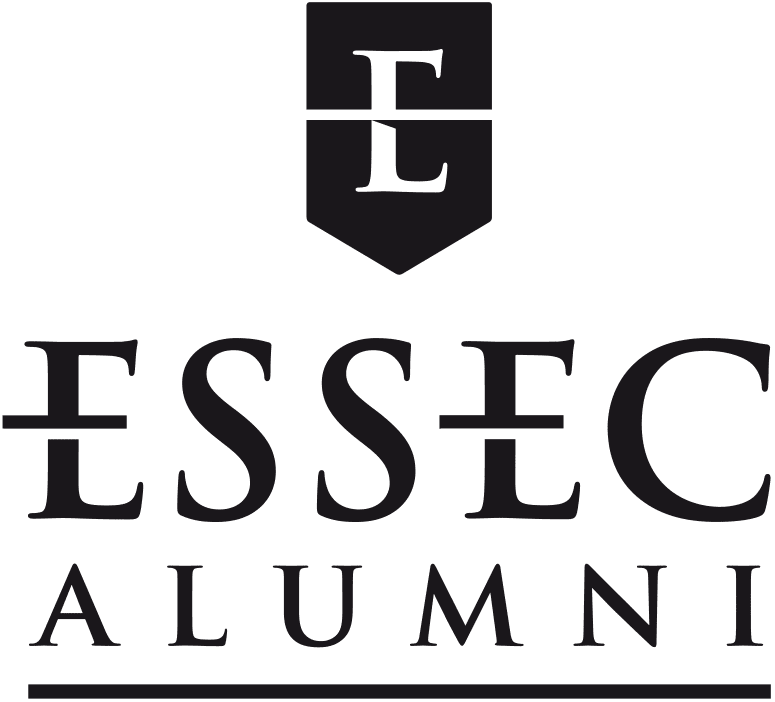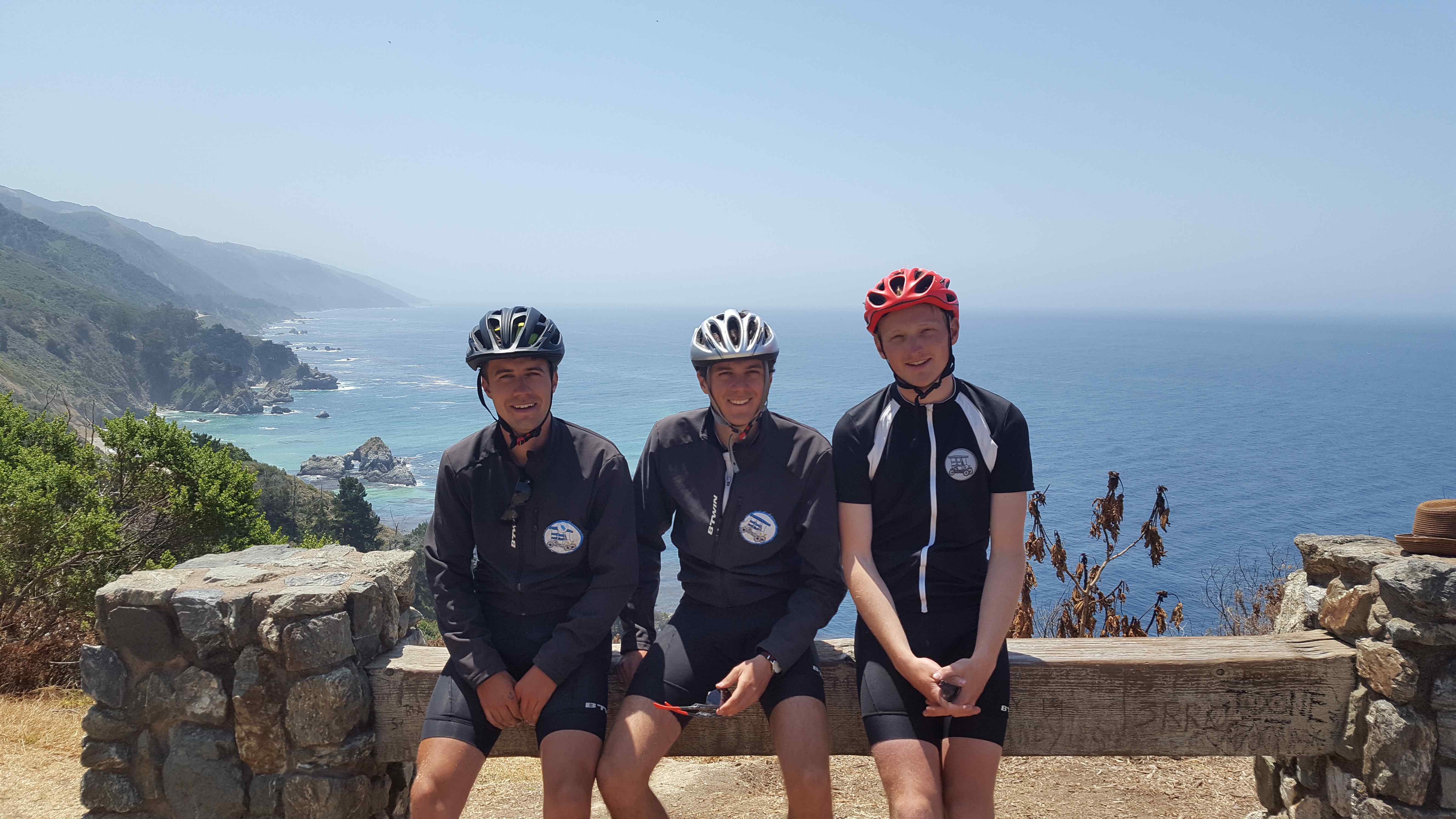La Quatrième Roue du Carrosse: “ESSEC is flourishing on the west coast of the USA!”
Sponsored by the ESSEC Foundation and ESSEC Alumni, as part of our lifetime membership policy, three students from La Quatrième Roue du Carrosse spent several months pedalling along the west coast of the USA on a Rosalie bicycle. What were they doing there? Tracking down and interviewing our alumni in the area. We joined them to take stock of their adventure a few weeks after their return to France.
ESSEC Alumni: Can you give us a brief overview of your trip?
Jean-Baptiste Martinon: We landed in Seattle on 4 April. From there, we travelled to Portland, then San Francisco and Los Angeles, before ending up in San Diego. We followed the Pacific Coast and visited iconic spots like the Grand Canyon, Yosemite National Park, Malibu Beach, and even Las Vegas. In total, we pedalled for around 2,500km over four months, and met more than 30 ESSEC graduates.
EA: After having made the trip, what impressions do you have of the ESSEC network in the USA?
Thomas Noslier: We saw that ESSEC is flourishing all along the west coast. As you might imagine, most of the alumni live and work in San Francisco and Los Angeles, but we also met our graduates in Portland and San Diego. Their profiles are very different depending on the geographical area: in San Francisco, our graduates are mostly working for tech companies (Criteo, Turo, etc.); in LA, it’s the entertainment industry (Disney, Paramount, etc.); sport in Portland (Nike, Adidas, etc.); and digital companies in Seattle (Amazon, Microsoft, etc.). There is, however, one thing which they all have in common: the strong ties they have to ESSEC, the experiences they have had there, and the friendships they’ve made. Some are still in WhatsApp groups with their old ESSEC flatmates!
EA: Did it seem as though people in America knew about the ESSEC brand?
Alexandre Malfoy: We can’t lie: ESSEC is nowhere near as well-known in the States as it is in France. But that’s mostly down to the proliferation of famous universities on the west coast. When you have Berkeley and Stanford, why bother looking for talent in other pools? All the more so when hiring foreigners means getting a visa, which is no mean feat.
EA: What are your best memories?
J-B. Martinon: It’s hard to choose! One of the best was when we reached the Golden Gate Bridge on the Rosalie, after having pedalled 1,300km over three weeks in the wilderness... Another magic moment was the Big Sur road in California, riding along the clifftops with unbeatable views of the sunset. Amazing!
T. Noslier: When it comes to people, we have to give a special mention to Victor and Evon who put us up in Dayton, Oregon. We turned up at the home of these American pensioners as complete strangers, and got on so well it was hard to leave the next day, having spent the evening telling them about our lives, our culture, and our educations. We could never have expected such a warm, generous welcome.
A. Malfoy: Another memorable encounter was with the two lovely Canadian cyclists, a father and daughter, who stopped to ask if we needed help when we were having a technical problem. We followed the same path as them for 48 hours, ending up at the same campsite at the end of each day. It was a chance to spend the evening putting the world to rights around a campfire after exhausting days spent pedalling.
EA: What did speaking to our alumni teach you about the USA?
J-B. Martinon: All of the ex-pats we met emphasised the differences between the USA and France. Firstly the differences in how we work. The Americans seem more focused on action than reflection. The make fast decisions that are immediately followed by concrete action, whereas we spend more time thinking about things in Europe. The French in particular have a tendency to hold a series of meetings and presentations to make sure we are making the right decision, while the Americans, apparently, don’t really bother with market research and preparatory analysis, preferring to take action and then adapt in line with the results. That’s not to say one way is better than the other. Though we have to admit that this strategy fills project developers with a lot of enthusiasm, and gives energy to the people who want to work on them.
T. Noslier: We also noticed differences in social relationships. The Americans are very extroverted, and it’s not surprising they are known as unparalleled communicators. It wouldn’t go down well in France to call out to a stranger in the street so you could talk to them. In the USA, people called us over wherever we went on our Rosalie bike, with lots of questions about what we were doing. It does, however, have its limits: while the contact was friendly, it was often just superficial. They say that the Americans are like peaches: soft on the outside, but then you come up against a stone. It’s hard to make real friendships. French people seem more like coconuts. There’s a hard shell, but once you break through that the nourishing water starts flowing...
A. Malfoy: Another difference: Americans don’t make a clear distinction between their personal and professional lives. They might work on their emails at the weekend, or leave the office early to go surfing. That doesn’t mean that they work less. On the contrary, they get up very early, at around 5am, and get to the office by 6. In fact, they rise with the sun.
J-B. Martinon: One last thing, the Americans don’t run their careers like we do. They tend to have a few things on the go. For example, you might be a sales director Monday to Thursday, do a shift in a coffee shop on Friday, and teach surfing classes twice a week after work. Even the ex-pats we met have been caught up by this “slash” work culture. Vincent Marçais (E89), for example, has a high-level marketing job at Paramount in Los Angeles, while spending one day a week doing interior design. Loads of people are doing it!
EA: Did the ESSEC community follow your adventure as closely as you’d hoped?
T. Noslier: Yes, we had a lot of support and made a lot of contacts. It was also a networking opportunity: graduates got in touch with us after finding us on social media, and students got in touch with the alumni we met after watching the interviews.
EA:What do you think the future holds for La Quatrième Roue du Carrosse?
A. Malfoy: We really hope that the initiative will continue into the future, changing its format as it goes. The perfect scenario would be that another project emerges with the same central theme of encounters between students and graduates, just with a different mode of transport and in a different part of the world, so that we can keep exploring and shining the spotlight on the international ESSEC community.
As for the team from La Quatrième Roue du Carrosse,
Alexandre Malfoy, Jean-Baptiste Martinon and Thomas Noslier are now in their final year at ESSEC.
A keen sportsman and traveller, Alexandre Malfoy spent two months in Vietnam with ESSEC Tuonglaï, a charity, and then 4 months in New York for an internship at a start-up. He has just completed an apprenticeship contract at Décathlon, and will now be working there on a permanent contract.
Like Alexandre, Jean-Baptiste Martinon finished his year with ESSEC in summer and set off for two months in Vietnam with Tuonglaï at the end of his first year. Interested in hospitality and catering, he completed an internship with the Sandals hotel chain in Jamaica, followed by a traineeship with the hospitality team at Compagnie de Phalsbourg. In parallel, with some friends he set up an association based on the French Solex motorised bicycle. A keen sportsman, he tries to complete one sporting challenge every year.
Thomas Noslier has completed three internships: the first in financial consulting, the second for a private equity fund, and the third for six months at Lazada in Singapore. A keen sportsman, he followed a specialised sports curriculum throughout his secondary school education, and now focuses on sailing, mountain biking, and hiking.
About the ESSEC Alumni student competition
As of September 2017, students become lifetime members of ESSEC Alumni as soon as they are enrolled. The cost of membership is included in their school fees, and membership lets them enjoy the association’s services and gain access to a graduate network throughout both their studies and their careers.It is a system that brings new generations of ESSEC Alumni together, and consolidates the links between ESSEC students and graduates.
As part of the initiative, ESSEC Alumni has decided to sponsor a student project every year, judged on a pitch given by the students, according to the following criteria:
1. The relevance of ESSEC Alumni in the project, and how well it fits the association
2. Use of concrete, quantifiable communication tools, that can be used by ESSEC Alumni
3. Alignment with ESSEC Alumni’s core values: pioneering spirit, excellence, diversity, humanism
4. If possible, networking as part of the project
Up for grabs: €4,000 in funding and support with practical matters and communications.
Learn more:

Comments0
Please log in to see or add a comment
Suggested Articles



